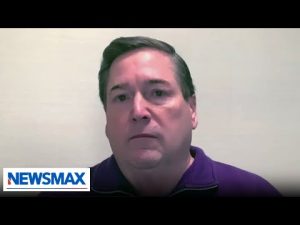In the heart of America’s Midwest, Wisconsin is currently facing a pivotal moment that could alter the political landscape for years to come. With a critical Supreme Court election approaching on April 1, the stakes have never been higher for conservative voters. Brett Galfi, the Vice Chair of the Republican Party in Milwaukee and the National Enterprise Director for Turning Point Action, recently shed light on the significance of this election during a discussion on a conservative news channel. The future of Wisconsin, and perhaps the nation, may depend on the outcome of this race.
The last two years in Wisconsin have served as a cautionary tale for conservatives. Following the loss of a traditionally conservative 4-3 majority on the Supreme Court, a series of reforms put in place during the Scott Walker administration began to unravel. Voter ID laws were reinstated in a matter of weeks, and the redrawing of legislative maps resulted in substantial losses for Republicans—10 assembly seats and 4 state senate seats, to be exact. Galfi argues that these changes didn’t just affect Wisconsin; they reverberated nationally, impacting the Republican Party’s chances in the 2024 elections and beyond.
This year, everything hinges on the upcoming election where conservative candidate Brad Schimel is vying for a 10-year term on the Wisconsin Supreme Court. If Schimel wins—something many conservatives are fervently rooting for—the balance of power could shift dramatically back toward a conservative majority. This change would not only restore voter ID laws but could also prevent further liberal encroachments that have been promised by left-leaning factions in Wisconsin. If the left succeeds, it could mean more than just local changes; it could flank this pivotal state from the electoral map entirely come 2028.
Recognizing the urgency, Turning Point Action has launched a new initiative dubbed “Commit 100.” This program is geared towards galvanizing conservative voter turnout, especially given that only about one in three eligible voters participated in the last election. Their goal is to push this number above 40% by directly engaging nearly 57,000 conservatives in Milwaukee who have shown a tendency to sit out elections. Goals like these not only help to shore up local support but also aim to make Wisconsin a swing state again in the national dialogue.
The “Commit 100” initiative is designed for grassroots involvement. Volunteers can sign up through the website to receive a targeted list of conservative voters who could use a friendly reminder to head to the polls. Engaging with these voters could take many forms—door-to-door knocking, text messaging, or even sending postcards. For those willing to go the extra mile, the program offers travel support to come to Wisconsin and assist in campaigning efforts firsthand. The goal is to spread enthusiasm and ensure that conservative voices are heard loud and clear during this crucial election.
In a nutshell, Wisconsin finds itself at a crossroads. With a conservative Supreme Court seat up for grabs, the actions taken (or not taken) in April could shape the state’s approach to voting laws and potentially impact the broader national electoral scene. As the countdown to the election begins, each voter is being called upon to play their part. Whether it’s through knocking on doors or simply spreading the word, every action counts in the effort to reshape the future of Wisconsin. This isn’t just about one state; it’s about setting the stage for the next chapter in American politics.



